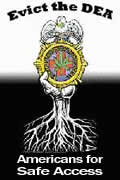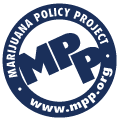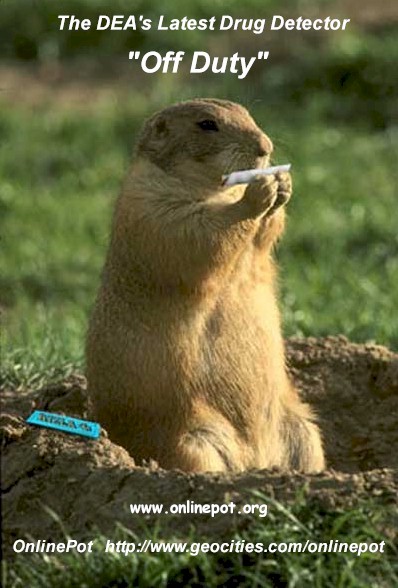|
We Update Daily!
 Custom Search Custom Search
Chris S. Kenoyer. Owner
MMJ Patient, Medical Activist,
Online Patients Advocate,
Online MMJ News Journalist
My Medical Bio
Follow Us Now On Twitter
@MedicalMMJMan
Or Follow Us Now
On Facebook
Email Us Here
olpwebs@yahoo.com
Or Email Us Securely Here
MedicalMMJMan@countermail.com
NEW 100% Encrypted Email Server
OLP’s Free MMJ News EList
Get The Latest In MMJ News
Press Contact Info
Is CBD? A Possible Cure For
Breast Cancer..? And All The Other
Many Forms & Types Of Cancer..?
Learn More About CBD Here
***************************
Advertise Here On OnlinePot
Rates As Low As $50 a Year
24/7 – 365 Days A Year Of Sales!
***********************************
Website Navigational Links
Main Start Page 2
**************************
Latest Marijuana News Reports
*********************************
Parody’s Cartoons US
Government Grown Pot,
Term Papers, School
Reports, & Thesis’s On
Marijuana & Cannabis
*********************************
Amsterdam A to Z
********************************
Canadian Marijuana Websites
*******************************
Church’s & Pot Cannabis
*****************************
Co-Ops, Clinics, Dispensary’s
*****************************
Marijuana Doctors & Clinics
****************************
Pot Cooking Recipes
****************************
Drug Testing A To Z
***************************
Pot Games
****************************
Pot Songs Video’s
****************************
100’s Of Grow Guides
***************************
Hash A- Z
***************************
Cannabis Legal Info, Drug
Lawyers, State, Federal Laws,
State & Supreme Court Rulings
**********************
POW’s Of The MMJ War!
*****************************
Other Marijuana Websites
Reciprocal Link Exchange
****************************
Medical Marijuana Studies,
Research Report’s, Medical
Cannabis Clinic Study’s
****************************
Parody’s & Cartoons
When We All Need A Good Laugh!
****************************
Avoiding Online MOM Scammers
Newly Re-Updated Info!
*****************************
The Politics Of Contraband
Medical Marijuana In The Mail?
******************************
The Hall Of Shame Section
The Online MOM Scammers
*****************************
Online MOM Providers Ads
****************************
Politicians & Voters Rights
****************************
Medical Marijuana, Strains
****************************
The OG Marijuana Strain Guide
****************************
800+ FAQ Growing Questions
****************************
Patients Spiritual Guidance,
Free Online Crisis Help Center
****************************
Online Marijuana Seed Banks
****************************
Maximum Security Section
Just Updated!
*****************************
Traveling Tips, Guides, B & B’s
****************************
Vaporizers A To Z
*****************************
Online Pot Video’s & Movies
**********************************************
Please Visit Both Of Our Sister Websites!
Maine Patients Coalition.org
The Reefer Madness Teaching Museum.org
Listen Right Here Online!
To Original 1930-1950’s
Reefer Madness Propaganda
Radio Shows And Programs
Before TV There Were
"Radio Stars"



*********************************
Legal Disclaimer
Guest Book
Translate Text or Web Page Go To:
Language Tools Google Translations
Article Submissions & News
Reports Are Always Gladly
Accepted Here.

No part of this site maybe used or
reproduced in whole or in part
without the written consent of the
Copyright Owner
www.onlinepot.org
OLP ENTERPRISES L3C
1999-2014 Copyright
© All rights reserved
OnlinePot assumes no legal liability for any products, or information or
news posted, services offered, Or
any contests or give away’s offered.
|
|
Animal Drug Prosecutions Trial
Memorandum Legal Issues

Return To OnlinePot’s Legal Section Main Page
IV. LEGAL ISSUES
A. Specific Statutes Involved
1. Title 18, United States Code, Section 371 (conspiracy) states in pertinent part:
If two or more persons conspire . . . to commit any offense against the United States . . . or any agency thereof in any manner or for any purpose, and one or more of such persons do any act to effect the object of the conspiracy, each shall be fined not more than $10,000 or imprisoned not more than five years, or both.[FN26]
FN26. Pursuant to Title 18, United States Code, Section 3571(b)(3), an individual found guilty of a felony offense as charged under Counts 1 through 6 may be fined as much as $250,000 per count.
- 2. Title 21, United States Code, Section 331 (prohibited acts) states in pertinent part:
The following acts and the causing thereof are prohibited:
(a) The introduction or delivery for introduction into interstate commerce of any . . . drug . . . that is adulterated or misbranded. . . . (c) The receipt in interstate commerce of any . . . drug . . . that is adulterated or misbranded, and the delivery or proffered delivery thereof for pay or otherwise. . . .
- 3. Title 21, United States Code, Section 333(b) (penalties for violations of Section 331)[FN27] states in pertinent part:
Notwithstanding the provisions of subsection (a) of this section, if any person . . . commits such a violation [a violation of section 331] with the intent to defraud or mislead, such person shall be imprisoned for not more than three years or fined not more than $10,000, or both.[FN28]
FN27. Effective July 22, 1988, 21 U.S.C. § 333(b) was recodified as 21 U.S.C. § 333(a)(2).
FN28. See footnote 27, supra.
- 4. Title 21, United States Code, Section 321 (definitions) states in pertinent part:
For the purposes of this chapter–
(g)(1) The term "drug" means . . . (B) articles intended for use in the diagnosis, cure, mitigation, treatment, or prevention of disease in man or other animals; . . .
. . .
(w) The term "new animal drug" means any drug intended for use for animals other than man . . .
(1) the composition of which is such that such drug is not generally recognized, among experts qualified by scientific training and experience to evaluate the safety and effectiveness of animal drugs, as safe and effective for use under the conditions prescribed, recommended, or suggested in the labeling thereof; . . . .
- 5. Title 21, United States Code, Section 351 (adulterated drugs) states in pertinent part:
A drug . . . shall be deemed to be adulterated–
(a) . . . (5) if it is a new animal drug which is unsafe within the meaning of section 360b of this title . . . .
- 6. Title 21, United States Code, Section 360b (unsafe new animal drugs) states in pertinent part:
(a)(1) A new animal drug shall, with respect to any particular use or intended use of such drug, be deemed unsafe for the purposes of section 351(a)(5) . . . of this title unless–
(A) there is in effect an approval of an application filed pursuant to subsection (b) of this section with respect to such use or intended use of such drug . . . .
- 7. Title 21, United States Code, Section 352 (misbranded drugs) states in pertinent part:
A drug . . . shall be deemed to be misbranded– . . . (b) If in package form unless it bears a label containing (1) the name and place of business of the manufacturer, packer, or distributor . . . . . . . (f) Unless its labeling bears (1) adequate directions for use . . . . B. Elements of the Offense 1. Count One
- The crime of conspiracy as charged under Count 1 of the Indictment has four essential elements, which are:
- One, in or about December 1985, two or more persons knowingly and willfully reached an agreement or came to an understanding to violate, with intent to defraud or mislead, the Food and Drug Act in at least one of the ways described in the Indictment.
- Two, the defendant voluntarily and intentionally joined in the agreement or understanding, either at the time it was first reached or at some later time while it was still in effect;
- Three, at the time the defendant joined in the agreement or understanding, he knew the purpose of the agreement or understanding; and
- Four, while the agreement or understanding was in effect, and after September 16, 1987,[FN29] person who had joined in the agreement knowingly did at least one of the "overt acts" described in the Indictment in furtherance of the agreement or understanding.
FN29. To not be barred by the statute of limitations, the government must prove that one or more overt act occurred within five years of the date of indictment, which in this case would be after September 16, 1987. See United States v. Alfonso-Perez, 535 F.2d 1362 (2d Cir. 1976).
2. Counts 2-6
- The crimes charged in Counts 2 through 6 of the Indictment, the introduction or delivery for introduction into interstate commerce of animal drugs that were misbranded, each have three essential elements, which are:
- One, on or about the date given, the defendant introduced or caused to be introduced into interstate commerce an animal drug;Two, the drug was "misbranded" in that its labeling failed to bear adequate directions for use; and
- Three, the defendant acted with the intent to defraud or mislead.
- C.XXXXXXX’s Liability Under These Principles
- XXXXXXXX’s liability for the conspiracy is plain. Two of his black market sources for the bulk drugs, both of whom have pleaded guilty to charges in connection with their own distribution of bulk animal drugs, will testify that the defendant was a knowing and willing participant in a scheme to: (1) with the intent to defraud and mislead, acquire and distribute new animal drug products that had not been approved for use by the FDA (and were therefore adulterated, see 21 U.S.C. § 351(a)(5)); and (2) with the intent to defraud and mislead, acquire and distribute bulk animal drugs that did not bear proper labeling and/or adequate directions for use (and were therefore misbranded, see 21 U.S.C. §§ 352(b)(1), 352(f)(1)). Similarly, the defendant’s customers will testify as to the defendant’s role in the sale of these same drugs.
- The proof is equally compelling as to the defendant’s culpability as to Counts 2-6. In support of each count, the defendant’s customer, a veterinarian in Viborg, South Dakota, and the veterinarian’s employees will testify as to the nature of the receipt of each identified bulk animal drug from the defendant. This testimony will include a description of the product received, including its general appearance, and the fact that none of the drugs bore adequate directions for use. This testimony will be corroborated by, among other things, the coded invoices supplied by the defendant along with the associated cancelled checks from the customer to the defendant.
- Moreover, the defendant’s furtive conduct designed as it were to evade FDA scrutiny is more than ample to establish his felonious intent to defraud or mislead. The defendant’s conduct, as described above, rises easily to the level found to support felony convictions in United States v. Arlen, supra, and United States v. Bradshaw, supra. In Arlen, the Fifth Circuit held that a defendant who took "active steps to avoid detection and regulation by the FDA" had the requisite intent to defraud or mislead to support a felony conviction.[FN30] Arlen, 947 F.2d at 144. Similarly, in Bradshaw, the Eleventh Circuit upheld a defendant’s felony convictions where the government’s proof of intent to defraud or mislead consisted of acts of deception directed to evade FDA and state enforcement authorities. Bradshaw, 840 F.2d at 873-75. Recognizing that the overriding purpose of the FDCA is "consumer protection — the protection of the public against any misbranded or adulterated food, drug, device, or cosmetic," the Eleventh Circuit concluded that a defendant who "misled . . . governmental agencies, thereby frustrating their efforts to protect the public," was properly convicted.[FN31] Id. at 874.
FN30. In Arlen, the defendant was careful not to generate or maintain any records of his steroid dealings, stopped accepting blank money orders because they would create a record, rented a private postal box under a fictitious name, and used fake names and addresses when mailing steroid packages. Id., 947 F.2d at 143-44.
FN31. Among other things, the defendant in Bradshaw engaged in the following acts: he moved from state to state frequently, used mail drops rather than his home address when mailing drugs to customers, used false names, mislabeled packages as vitamins, and discussed "methods of avoiding detection with . . . customers." Id. at 873.
- D.Anticipated Defenses
- The government does not anticipate that XXXXXXXX will contest the government’s proof that he sold the various specified products on the dates alleged. Nor does the government believe that XXXXXXXX will seriously contend that the products were labelled properly under the law. Nor does the government believe that XXXXXXXX will raise a serious challenge to the evidence establishing that he bought products from black market sources and that he subsequently distributed those products to his customers.
- Rather, the government anticipates that the defendant may make three arguments as to the substantive counts. First, the defendant may argue that the products he acquired and distributed were bulk chemicals, not drugs. Second, the defendant may assert that the distribution of the bulk drugs to veterinarians was lawful. And third, the defendant may concede that he illegally distributed bulk new animal drugs (thereby confessing misdemeanor liability), but contend that he did not have the requisite intent to defraud or mislead to support a felony conviction. None of these defenses are valid.
1.The bulk products were drugs
- The first anticipated defense fails in light of the facts and applicable law. A "drug" is defined as any "articles intended for use in the diagnosis, cure, mitigation, treatment, or prevention of disease in man or other animals . . . ."[FN32] "Intended use" may be derived or inferred from labeling, promotional material, advertising, oral statements, or any other relevant source. E.g., United States v. Storage Spaces Designated Nos. 8 & 49, 777 F.2d 1363, 1366 (9th Cir. 1985), cert. denied, 479 U.S. 1086 (1987); United States v. Article . . . Consist. of 216 Carton Bottles . . . "Sudden Change", 409 F.2d 734, 739 (2d Cir. 1969) (citing cases); V.E. Irons v. United States, 244 F.2d 34, 44 (1st Cir.), cert. denied, 354 U.S. 923 (1957); Alberty Food Products v. United States, 194 F.2d 463 (9th Cir. 1952). A product intended for use as a drug may be regulated as a drug regardless of its composition. "Sudden Change", 409 F.2d at 739 (citing cases in which peppermint tea leaves, honey, mineral water, and animal hearts have been found to be "drugs"). The determination of whether a product is a "drug" is conducted on an objective basis, taking into consideration all relevant sources. Id.; Kellogg Co. v. Mattox, 763 F. Supp. 1369, 1383 (N.D. Tex. 1991), aff’d mem., 940 F.2d 1530 (5th Cir. 1991) (and cases cited therein).
FN32. 21 U.S.C. § 321(g)(1)(B).
- By any objective criteria, the intended use of the products acquired and distributed by XXXXXXXX must be considered drugs. The defendant represented the substances to be (and the purchasers believed the substances to be) antibiotics for veterinary use. Moreover, his customers were veterinarians who sought and used the products in the treatment of animals. Any contention to the contrary has no basis in fact. 2. The FDCA applies to deliveries of bulk drugs to veterinarians
- Appellate courts have uniformly upheld the view that the FDCA applies to veterinarians receiving and distributing bulk drugs. See generally Algon, supra; 9/1 Kg. Containers, supra.
3.Requisite intent to defraud or mislead
- The defendant appears poised to make two separate arguments why his conduct did not involve the requisite intent to defraud or mislead necessary to support felony convictions. First, the government anticipates that the defendant will renew the claim, made in his earlier motion to dismiss the Indictment (dkt. 31), that he relied in good faith upon two district court decisions that were subsequently overturned on appeal.[FN33] Second, the defendant will contend that evidence sufficient to establish an "intent to defraud or mislead" must include evidence of intent to cause a monetary fraud.
FN33. United States v. 9/1 Kg. Containers, 674 F. Supp. 1344 (C.D. Ill. 1987); rev’d, 854 F.2d 173 (7th Cir. 1988), cert. denied, 489 U.S. 1010 (1989); United States v. Algon Chemical, Inc, 689 F. Supp. 394 (D.N.J. 1988), rev’d, 879 F.2d 1154 (3d Cir. 1989).
- As discussed at pages 13-18 of the government’s March 8, 1993, Opposition to Defendant’s Second Motion to Dismiss (dkt. 38), defendant’s "mistake of law" of defense has no colorable basis in law or fact.[FN34]
FN34. Rather than repeat arguments previously made, the government incorporates by reference its discussion at pages 13 through 18 of this response.
- Of particular note is that (1) the sequence of events contradicts any claim of good-faith reliance on the erroneous district court decisions (the first decision was handed down in December 1987, two years after the start of the conspiracy and more than a year after the defendant acknowledged the government’s position that the sale of bulk animal drugs without a proper NADA was illegal); (2) the legal issues in the two cases did not even purport to cover conduct engaged in by the defendant — namely, the sale and distribution of non-approved drugs (i.e., drugs that were not covered by an approved NADA even at their source) and of drugs having no labeling at all); and (3) the defendant’s claim of good-faith reliance is wholly inconsistent both with his misrepresentations to the FDA and with his clandestine activities designed to evade detection.
- Equally devoid of merit is defendant’s claim that "intent to defraud or mislead" requires proof of intent to cause a monetary loss. As will be discussed at greater length in the government’s opposition to defendant’s motion in limine concerning this issue, the defendant’s argument is wholly misguided. For one thing, it completely ignores the fact that the government can meet its burden of proof by establishing either an "intent to defraud" or an "intent to mislead." No explanation has been offered by the defendant why an intent to "mislead" requires proof of monetary loss nor can the government fathom one.
- Moreover, as recognized by the Supreme Court in McNally v. United States, 483 U.S. 350, 359 n.3 (1987), the term "defraud" by itself does not require evidence of a monetary loss. Rather, the term "defraud" must be construed in light of the specific statute and statutory scheme. Thus, while the Supreme Court concluded that "intent to defraud" as used in the mail fraud statute, 18 U.S.C. § 1341, requires loss of money or property, decisions subsequent to McNally have made clear that no proof of monetary loss is required to prove an "intent to defraud" in the context of other statutory schemes — be it the FDCA,[FN35] or another statutory framework.[FN36]
FN35. See Bradshaw, 840 F.2d at 875 n.8 (McNally inapplicable to the FDCA); Arlen, 947 F.2d at 142-43 (following Bradshaw); Mitcheltree, 940 F.2d at 1347, 1352 (same); Cambra, 933 F.2d at 755 (same).
FN36. E.g., United States v. Murphy, 957 F.2d 550, 553 (8th Cir. 1992) (affirming conviction of conspiring to defraud the government under 18 U.S.C. § 371 in connection with the leaking of information about an FBI investigation); United States v. Elkins, 885 F.2d 775, 781 (11th Cir. 1989) (conspiracy to defraud the government of its right to implement foreign policy), cert. denied, 494 U.S. 1005 (1990); United States v. Kato, 878 F.2d 267, 270 (9th Cir. 1989) ("[C]onspiracy to defraud the United States under 18 U.S.C. § 371 does not require an agreement to defraud the government of money or property").
- E.Admissibility of Unalleged Conspiratorial Conduct
- An issue as to the admissibility of unalleged overt acts in support of the conspiracy may arise. Such evidence is properly admissible. See, e.g., United States v. Lewis, 759 F.2d 1316, 1344 (8th Cir.), cert. denied, 474 U.S. 994 (1985); United States v. Ruiz-Altschiller, 694 F.2d 1104, 1109 (8th Cir. 1982), cert. denied, 462 U.S. 1134 (1983); Culp v. United States, 131 F.2d 93, 100 (8th Cir. 1942).
- F. Admissibility of Co-Conspirator Statements
- Statements made "by a coconspirator of a party during the course and in furtherance of the conspiracy" are not hearsay. Fed. R. Evid. 801(d)(2)(E); United States v. Edwards, 994 F.2d 417, 421 (8th Cir. 1993), cert. denied, 114 S. Ct. 701 (1994). To meet the requirements under this rule, the government must demonstrate three elements by a preponderance of the evidence: "(1) that a conspiracy existed; (2) that the defendant and the declarant were part of the conspiracy; and (3) that the declaration was during the course and in furtherance of the conspiracy." United States v. Sileven, 985 F.2d 962, 966-67 (8th Cir. 1993).
- In determining whether a statement is in "furtherance" of a conspiracy, the court should interpret the term "furtherance" broadly. Edwards, 994 F.2d at 433. So long as the overall effect of the conversation is to facilitate the conspiracy, this prong is satisfied. Id.
- In United States v. Bell, 573 F.2d 1040, 1044 (8th Cir. 1978), the Eighth Circuit set forth the procedure for handling coconspirator statements. Under this procedure, coconspirator statements may be admitted conditionally, and the court may determine at the close of the government’s evidence whether the government had established the existence of the conspiracy at the time of the statements in question. Id.; see Edwards, 994 F.2d at 421. The declaration in question is properly considered in determining the existence of the three elements set forth above. Bourjaily v. United States, 483 U.S. 171, 180-81 (1987); United States v. Hoey, 983 F.2d 890, 893 (8th Cir. 1993).
- G. Evidence of Plea Agreements with Government Witnesses
- The government will call certain witnesses who have entered into plea agreements requiring their cooperation with the government’s investigation of the illegal distribution and/or receipt of bulk animal drugs. These witnesses have already pled guilty and served their sentences.
- In its direct examination of each such witness, the government is entitled to elicit testimony concerning the fact that the witness pled guilty to particular charges, the details of those charges, and the nature of the cooperation agreement with the government. The testimony can properly include testimony concerning the requirement in the plea agreement that the witness provide only truthful testimony and can be prosecuted if he commits perjury. The plea agreement itself is admissible. United States v. Drews, 877 F.2d 10, 12 (8th Cir. 1989) (confederate’s plea agreement is admissible on direct examination as evidence of the witness’ credibility or acknowledgement of participation in the offense).
- H. Admissibility of Audio Tape Evidence
- The government’s evidence will include tapes of telephone conversations between XXXXXXXX and cooperating witnesses, which were made by the cooperating witnesses. Introduction of such evidence does not implicate any fourth amendment rights when, as here, an individual simultaneously records his conversation with the defendant with electronic equipment and has consented to the taping and monitoring of that conversation. United States v. White, 401 U.S. 745, 748-54 (1971); United States v. McMillan, 508 F.2d 101, 104 (8th Cir. 1974), cert. denied, 421 U.S. 916 (1975).
- The standard for admitting taped conversations is set forth in McMillan. Introduction of taped conversations is appropriate when the following requirements are satisfied:
- (1) That the recording device was capable of taking the conversation being offered into evidence;
- (2) That the operator of the device was competent to operate the device;
- (3) That the recording is authentic and correct;
- (4) That changes, additions or deletions have not been made in the recording;
- (5) That the recording was preserved in a manner that is shown to the court;
- (6) That the speakers are identified;
- (7) That the conversation elicited was made voluntarily and in good faith, without any kind of inducement.
Id. at 104.
- When, as here, the tapes were made by an individual acting at the government’s behest, many of these elements — such as the authenticity and correctness of the recording, the tapes having not been modified, the identity of the speakers, and the conversation being made voluntarily and in good faith — will be satisfied by that individual’s testimony.
- Moreover, the first element (capability of the recording device) may be established by the very existence of the taped conversation: "'[t]he very fact that the tape recording[] exist[s] establishes that the recording device was capable of picking up sounds and taking the conversation offered.’" United States v. Risken, 788 F.2d 1361, 1370 (8th Cir.) (quoting United States v. McCowan, 706 F.2d 863, 865 (8th Cir. 1983) (per curiam)), cert. denied, 479 U.S. 923 (1986). Similarly, the fact that the witness successfully recorded the conversation is proof of his competency to use the recording device. Id.
- Because the tapes in this case are of conversations in which the defendant was a participant, their contents are admissible as admissions of a party opponent under Fed. R. Evid. 801(d)(2)(A). See United States v. Coco, 926 F.2d 759, 760 (8th Cir. 1991). Although at the time of the conversations, the individuals with whom the defendant was speaking were no longer members of the conspiracy, that fact, in and of itself, does not render the substance of the conversations admissible only pursuant to Fed. R. Evid. 404(b). See United States v. Nunn, 940 F.2d 1128, 1131 (8th Cir. 1991). Given the contents of the taped conversations in which the defendant discusses his activities relating to the purchase of bulk animal drugs, the defendant’s statements are relevant evidence of the defendant’s knowledge and participation in the ongoing conspiracy to which the defendant still belonged. Thus, the tapes constitute direct evidence of the defendant’s participation in the charged conspiracy. Id. (taped statements of defendant to cooperating witness implying threats of harm should individual cooperate are admissible as evidence of defendant’s participation in the conspiracy).
- I. Use of Transcripts
- McMillan also sets forth the proper procedure for introduction of transcripts of taped conversations. McMillan, 508 F.2d at 105-06. Allowing the government to use transcripts to assist the jury in following taped conversations is left to the court’s discretion: "[i]t may be appropriate, in the sound discretion of the trial judge, to furnish the jurors with copies of a transcript to assist them in listening to tapes. In the ordinary case this will not be prejudicially cumulative . . ." Id. at 105.
- Should the court admit the transcript as evidence, a limiting instruction governing the use and weight of the transcript should be given. United States v. Foster, 815 F.2d 1200, 1203 (8th Cir. 1987).
- J. Use of Summary Exhibits
- The government may offer summary exhibits in its case-in-chief in lieu of introducing supporting underlying documents, such as telephone tolls, checks, and invoices. Pursuant to Fed. R. Evid. 1006:
The contents of voluminous writings, recordings, or photographs which cannot conveniently be examined in court may be presented in the form of a chart, summary, or calculation. The originals, or duplicates, shall be made available for examination or copying, or both, by other parties at reasonable and place. The court may order that they be produced in court.
- With the adoption of Rule 1006, courts have held that summary charts themselves may be introduced into evidence and sent to the jury at the judge’s discretion. United States v. Possick, 849 F.2d 332, 339 (8th Cir. 1988); United States v. Robinson, 774 F.2d 261, 275-76 (8th Cir. 1985). The evidence underlying the summary chart need not be so voluminous that it would literally be impossible to examine all underlying documents. Possick, 849 F.2d at 339. Rather, admission of summary charts is appropriate where in-court examination would be an inconvenience. Id. (upholding district court’s admission of chart summarizing telephone tolls).
- "[W]here charts which fairly summarize the evidence are used as an aid in understanding the testimony already introduced and the witness who prepares the charts is subject to cross-examination with all documents used to prepare the summary, the use of the chart is proper." United States v. Orlowski, 808 F.2d 1283, 1289 (8th Cir. 1986) (internal quotation omitted), cert. denied, 482 U.S. 927 (1987). Should the government offer summary exhibits, the individual who prepared the charts will testify as to the manner in which the charts were prepared and the underlying basis for the information contained in the charts, as well as attest to their completeness and accuracy. Moreover, the government will not seek to admit any such charts until after it has established a basis for the admissibility of all of the underlying documents.[FN37] Under such circumstances, the determination whether to admit the charts will lie within the court’s considerable discretion. See Orlowski, 808 F.2d at 1289; Robinson, 774 F.2d at 275.
FN37. A literal reading of Rule 1006 would suggest that the underlying documents need not themselves be introduced at trial, and the Fourth Circuit has so held. United States v. Strissell, 920 F.2d 1162, 1164 (4th Cir. 1990) (Rule 1006 only requires that underlying evidence for a summary be admissible and available to the opponent for cross-examination); see also Eighth Circuit Model Instruction No. 4.12 (1992) ("You may use those [schedules][summaries][charts] as evidence, even though the underlying documents are not here."); United States v. Clements, 588 F.2d 1030, 1039 (5th Cir.), cert. denied, 440 U.S. 982 (1979).
- When summary exhibits are sent to the jury, the Eighth Circuit has endorsed the giving of a limiting instruction concerning those exhibits. Possick, 849 F.2d at 339.
- K. Admission of Various Documentary Records
- The government anticipates introducing several forms of records, including, among other things, invoices pertaining to the defendant’s illegal sale of bulk drugs, cancelled checks used as payment to the defendant for the bulk drugs, cancelled checks used as payment from the defendant to his suppliers for the bulk drugs, and laboratory analyses of drugs illegally sold by the defendant.
- The government anticipates that the invoices will be admissible pursuant to, among others, Fed. R. Evid. 803(6) as business records. A proper foundation for business records does not require testimony from a witness who physically prepared the record in question. United States v. Gregg, 829 F.2d 1430, 1440 (8th Cir. 1987), cert. denied, 486 U.S. 1022 (1988); United States v. Pfeiffer, 539 F.2d 668, 671 n.2 (8th Cir. 1976). Rather, the admitting witness need only be sufficiently familiar with the records and the manner in which they were regularly received and maintained in the ordinary course of business. Pfeiffer, 539 F.2d at 671; see also United States v. Keplinger, 776 F.2d 678, 693-94 (7th Cir. 1985), cert. denied, 476 U.S. 1183 (1986); United States v. Parker, 749 F.2d 628, 633 (11th Cir. 1984); United States v. Flom, 558 F.2d 1179, 1182 (5th Cir. 1977).
- The government anticipates that the witnesses who provided checks to the defendant or who received checks from the defendant as payment for bulk drugs will testify as to the authenticity of those checks. Fed. R. Evid. 901(b)(1). Moreover, the checks are self-authenticating under Fed. R. Evid. 902(9). See United States v. Little, 567 F.2d 346, 349 n.1 (8th Cir. 1977), cert. denied, 435 U.S. 969 (1978).
- Similarly, laboratory analyses of drugs conducted on a routine basis are admissible as business records under Fed. R. Evid. 803(6). United States v. Baker, 855 F.2d 1353, 1359-60 (8th Cir. 1988), cert. denied, 490 U.S. 1069 (1989). The government need only establish that the records were made in the ordinary course of business, and the witness through which it seeks to admit the reports can testify that the governmental body kept the records under its care, custody, and control. Id. at 1560.
- L. Admissibility of Physical Exhibits
- The government intends to offer in evidence several physical samples of animal drugs distributed in interstate commerce by the defendant.
- So long as the government can establish that there is a reasonable probability that the physical evidence has not been changed or altered, the district court may admit the evidence. United States v. Miller, 994 F.2d 441, 443 (8th Cir. 1993); United States v. Pazzanese, 982 F.2d 251, 252 (8th Cir. 1992). Factors to be considered in making a determination of the admissibility of an object include the nature of the object, the circumstances surrounding its preservation and custody, and the likelihood that others tampered with it. United States v. Mays, 822 F.2d 793, 796 (8th Cir. 1987). The government need not introduce the testimony of every individual who handled the evidence or whose initials appear on the evidence. Miller, 994 F.2d at 443. "The integrity of evidence is presumed to be preserved unless there is a showing of bad faith, ill will, or proof that the evidence has been tampered with." Id.
- M. Self-Authenticating Records
- The government will introduce certain documents for which no testimony from a document custodian will be necessary. Among other things, these documents will show that the defendant never received from the FDA an NADA covering any new animal drug from the FDA, and that all NADAs for the new animal drug dimetridazole were withdrawn in July 1987. The information in these documents is admissible pursuant to Fed. R. Evid. 902(4), 902(1), and 803(10); Fed. R. Crim. P. 27; and Fed. R. Civ. P. 44.
- The government also anticipates introducing certified records from the Iowa Secretary of State pertaining to the defendant’s connection to Cigar. These records are self-authenticating and may be introduced pursuant to Fed. R. Evid. 902(4), 902(1), and 803(8); Fed. R. Crim. P. 27; and Fed. R. Civ. P. 44.
V. ADDITIONAL SUBMISSIONS
- The government respectfully requests leave to file supplemental memoranda as may become necessary before or during trial.
Dated: February __, 1994 Respectfully submitted,
STEPHEN JOHN RAPP
United States Attorney
GREGORY T. EVERTS
JAMES E. ARNOLD
Attorneys
Office of Consumer Litigation
U.S. Department of Justice
P.O. Box 386
Washington, D.C. 20044
(202) 514-0516/307-01744
|



 Button Ads!
Button Ads! 





